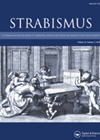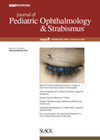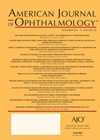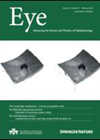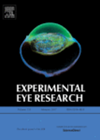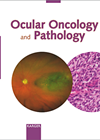
Journal Reviews archive for October 2017
ROP ocular outcomes after Bevacizumab treatment
The relationship between refractive outcomes and biometric parameters were evaluated following intravitreal Bevacizumab (IVB) monotherapy. Sixty-three infants were grouped into 1) infants treated with VB monotherapy for ROP (six with zone 1 and eight with posterior zone II retinopathy of...
Risk with density of suppression
The authors wished to determine the current practice of assessing and interpreting the density of suppression with the Sbisa / Bagolini filter bar in the management of amblyopia in the UK and to estimate the incidence of intractable diplopia following...
Strabismus and scleral buckling
The authors examine the incidence of strabismus following scleral buckle for retinal detachment surgery and the factors that influence the strabismus, its incidence, preventative measures and treatment options. This was a retrospective review of 344 patients (360 eyes) with a...
Surgical oculocardiac reflex
The authors evaluated the incidence of oculocardiac reflex (OCR) during strabismus surgery to determine its associated risk factors at a tertiary referral centre. Seventy-six patients were reviewed; 51.3% male and a mean age of 15±12 years. Strabismus surgery was bilateral...
Excessive blinking
A case review is presented to understand the clinical implications for children presenting to ophthalmology with episodes of excessive blinking in the absence of any obvious ocular abnormalities. This retrospective review was conducted from 2011-2014. The authors contacted parents and...
Does intravitreal bevacizumab help in diabetic retinopathy related vitreous haemorrhage?
This retrospective, interventional case series, aimed to assess the effectiveness of intravitreal bevacizumab (IVB) in vitreous haemorrhage secondary to proliferative diabetic retinopathy. The primary outcome was the rate of vitrectomy (PPV) after IVB, with secondary outcomes the number of IVB...
Fingolimod: ocular adverse effects
In this article the authors review the ocular side-effects of Fingolimod which is an oral immunomodulating drug used in the management of relapsing-remitting multiple sclerosis (RRMS). Fingolimod-associated macular oedema (FAME) is the most common ocular side-effect linked to this drug....
Importing iron to the retina
In the retina, iron is particularly critical for the visual phototransduction cascade. In the retinal pigment epithelium (RPE), RPE65 activity leads to 11-cis-retinaldehyde, the photosensitive component of rhodopsin production and iron containing enzymes are necessary for disc replacement in photoreceptor...
Retinitis pigmentosa (RP) associated cystoid macular oedema (CMO)
This is a review article from two units in the UK and Australia, highlighting the supporting evidence of possible pathogenesis and treatment modalities of CMO in RP. The authors proposed that the likely mechanisms for RP-CMO involved the breakdown of...
Surgical effect of limited membrane dissection
Strabismus surgery was performed with minimal dissection of Tenons sheath and minimal tissue manipulation compared to conventional methods for patients with pure horizontal strabismus – to evaluate the effect on surgical outcomes. The study included 54 patients; 52% female. Mean...
Chronic lymphocytic leukaemia (CLL) of the lacrimal sac
The authors present a case series of three patients with known CLL, two of which presented with mass and epiphora and one case with epiphora alone. All three patients had initially being diagnosed and were treated for chronic dacryocystitis. Histopathological...
Prognostication for uveal melanoma
The authors highlight the importance of using all available data in the prognostication of uveal melanoma (UM). Over recent years a number of molecular tests have emerged to allow clinicians to predict metastatic potential of UM. However, concordance between techniques...

